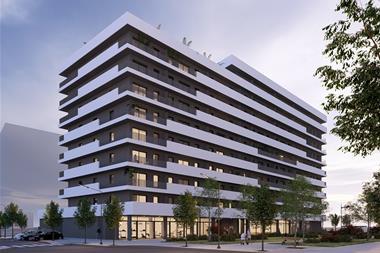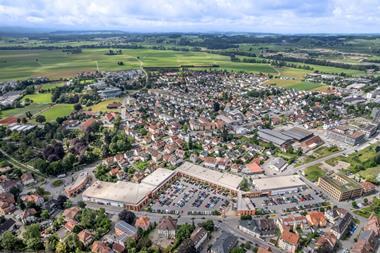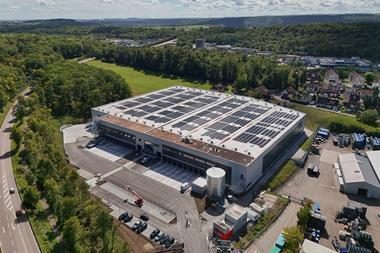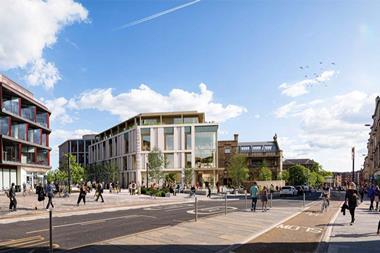The last five years have seen industrial property in France graduate from a niche sector to the mainstream investment market.
According to Investment Property Databank (IPD), industrial's share of institutional property portfolios grew from 2% of total capital value at the start of the decade, to 7% at the end of 2006 (IPD will publish its 2007 data in April 2008).
The sector has also seen a significant inflow of foreign investors including Corio, Kenmore, SEGRO and Teesland/Gvio. While new development has accounted for much of the growth in the investment stock, particularly in the logistics segment, there has also been an increase in sale and leaseback activity. Whereas many German companies still regard sales and leaseback deals as a sign of weakness, the arrangement has increasingly gained acceptance among French occupiers.
In terms of performance, the industrial sector has broadly tracked the wider French property market and total returns averaged 15.9% per year over the three years to end-2006, marginally ahead of the all-property average (source: IPD).
On the plus side, industrials had the advantage of a relatively high rate of income return (8% per year) and this has proved to be a major attraction for property companies and other geared investors looking for self-financing assets.
On the downside, the high rate of income return reflects investors' concerns that income growth in the industrial sector is likely to be relatively weak over the medium term. The only way to secure income growth closer to that in other sectors is intensive asset management.
In addition, industrial capital values appear to have benefited from the general decline in property yields in the French market.
According to CBRE, prime yields on logistic and standard industrial units in the Île-de-France both fell by around 150 basis points between the end of 2004 and mid-2007, to stand at 6% and 7% respectively. Prime industrial yields then held steady through the second half of last year, avoiding the upward correction seen in the Paris office market.
While all parts of the French industrial market have performed strongly in recent years, regional data from IPD reveal some intriguing variations. Surprisingly, perhaps, the Île-de-France surrounding Paris, which is the country's leading manufacturing region and also a major logistics hub, was the weakest region, with total returns of 15% per year over the three years to end-2006. In most other parts of the country, industrial total returns ranged from 16-19% per year and the star performer was Acquitaine including Bordeaux, which saw total returns average 21% per year.
Part of the explanation for Île-de-France's slightly weaker performance might be that, because it is the most established investment location, it benefited less from the increase in investor interest and associated fall in yields than other regions. Agents' data on prime yields in the regions provide some support for this theory, although the evidence is circumstantial.
However, another factor that might explain the relative strength of industrial returns in southern France is regional variations in economic growth. Demand for industrial space comes not just from manufacturers but from retailers and transport companies. and smaller units, in particular, often accommodate a wide range of different businesses whose fortunes are directly tied to the health of the local economy.
In many European countries, the capital is the most dynamic region and economic growth appears to ripple out to the regions. However, France is an exception to the rule and there are a number of clusters of relatively fast economic growth that are well away from Paris: in the south between Montpellier and Toulouse; in the west around Nantes and in the east around Strasbourg. The last cluster appears to be part of a bigger dynamic region stretching through southern Germany and northern Switzerland.
Looking forward, we believe that French industrial property will continue to deliver attractive returns. While in the short term we expect that yields will rise in line with the French office market, we think the large gap with finance costs at just over 5% will limit the upward correction in yields to 30-50 basis points.
In addition, we remain confident that France will avoid recession, thanks to a combination of tax cuts and our forecast that the ECB will begin to cut interest rates in the second half of this year. Although economic growth will be weaker than in 2006-07, we still expect French GDP to average 1.5-2% per year over the next three years.
Finally, there remains the long-term promise of a big increase in container traffic and in the demand for logistics warehouses at French ports, if the government succeeds in its plans to privatise freight handling. The recent growth in container traffic through Marseille has been anaemic compared with other European ports and a significant amount of freight destined for northern France is currently handled through Antwerp and Rotterdam, rather than Le Havre.
Mark Callender is head of international property research Schroder Property Investment Management












